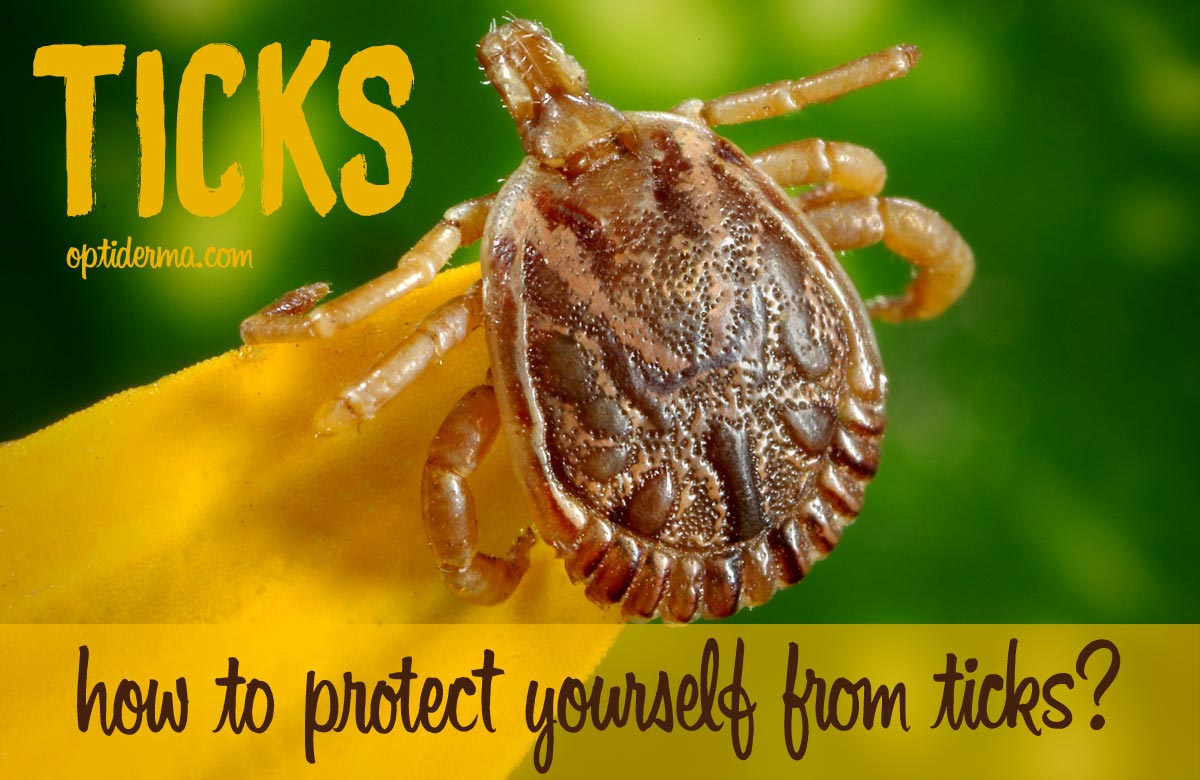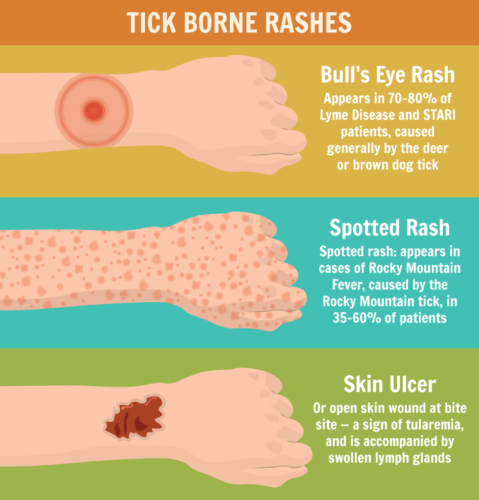
Are you psyched and primed to enjoy glorious summer days? Unfortunately, ticks are pumped up, too. In fact, they party hearty after finding a suitable host. However, the fun is all one-sided since ticks can transmit viruses, bacteria, and parasites. Your protection from infection is important to me and I want to equip you to avoid the threat of tick-borne disease.
You’ve probably heard that essential oils can be used against ticks. But you probably don’t know which ones to use. With this page, you’ll learn how to use rose geranium oil as a tick repellent. Did you know that rose geranium oil prevents ticks from detecting your presence?
Here are four aspects in which you’ll become well-versed after reading this article:
-
Hazards of Tick-Borne Illness
-
Dangers of Insecticides
-
Bite Prevention
-
How to make a natural tick repellent with Rose Geranium Essential Oil
Tricky Ticks
Ticks are eight-legged, blood-sucking insects that feed on animals and humans. They reside in leaf piles, grass, shrubs, and trees. They’re harder to spot during summer than fall, enlarging as the seasons progress. Insects the size of apple seeds in autumn can be very tiny in June, as small as poppy seeds.
Also, a tick bite can go unnoticed since the insect’s saliva contains a numbing substance. Isn’t that clever?
Hazards of Tick-Borne Illness
Ticks can potentially spread disease. The most common tick-borne illnesses are Lyme Disease, STARI, Rocky Mountain Spotted Fever, and ehrlichiosis.
The insects acquire bacteria from rodents such as mice and chipmunks, which they transmit upon piercing skin.
Ticks may not bite immediately since they prefer warm skin to set up camp. They especially gravitate to the armpit, groin, and scalp. They also favor the areas inside and around ears, within the navel, around the waist, and behind the neck.
Symptoms of Tick-Borne Infection
According to the Centers for Disease Control and Prevention, many tick-borne infections show similar signs. Here are the symptoms that can arise:
- fever
- chills
- headache
- fatigue
- muscle pain
- joint pain
- rash
A rash is the most telltale sign of a bite. Three patterns of skin inflammation are most common, indicating the type of tick responsible. Here’s a graphic of tick-borne rashes:

Dangers of DEET
Personally, I get ticked off by insecticides purported to be safe. DEET is linked to neurological damage and can cause seizures, confusion, and slurred speech.
According to Duke University Medical Center, studies show that DEET renders the death of brain cells as well as behavioral changes.
The pesticide can cause memory loss, poor concentration, and hampered learning. Military reports during the Persian Gulf War confirm these findings. (1)
Exposure to DEET can also trigger headaches, breathing difficulty, fatigue, and tremors. It can weaken your muscles and impair coordination, causing staggered walking.
The symptoms may not surface until months or years after use! The most hazardous repellents are those that combine DEET with other pesticides, such as permethrin.
Perils of Permethrin
Toxipedia reports that permethrin destroys nerve membranes. The Environmental Protection Agency classifies the pesticide as a Type II toxin. Mice studies show it to be potentially carcinogenic.
According to the National Institutes of Health, permethrin can alter blood oxygen levels, producing brain fog and seizures. When inhaled, it provokes coughing and breathing difficulty. (2)
Products containing permethrin are legally required to have “Warning” or “Caution” printed on their labels. (3) Such words are clues to health hazards.
Bite Prevention
There are several precautions you can take to avoid getting bitten. Here are steps to follow if you plan on gardening, camping, mowing the lawn, picnicking or hiking!
1. Apply rose geranium oil repellent to your skin
Targeting areas favored by ticks. In particular, dab it behind your neck, ears, knees, and around your navel. Also, spray it on your clothes.
Recipes using the oil follow in the next section.
2. Wear appropriate clothing
Don light-colored clothing to make hitchhikers more visible. Wear long sleeves and long pants. Tuck your blouse into trousers and pant legs into your socks.
You may look a little nerdy, but your health is paramount, right? Also, safeguard your scalp with a hat and your feet with closed shoes.
3. Try to steer clear of tall grasses, brush, and leaf piles
When hiking, stay in the center of paths and avoid brushing against branches. Thankfully, ticks are unable to jump.
However, they do cling to leaves with their rear legs, poised to hijack a host with front legs. By avoiding proximity to where ticks perch, you’ll decrease the risk of making contact.
4. Don’t forget to do a body check
Upon returning home or to a campsite, do a body check. Use a full-length or hand-held mirror so you don’t miss any areas.
If you spot a tick, remove it with fine-tipped tweezers. Grasp as close to your skin surface as possible, and slowly pull straight up. Don’t coat the insect with nail polish, petroleum jelly, alcohol, or gasoline. It also won’t help to stab the bug with a needle, nail, or hot match.
These actions may cause the tick to cling tighter or regurgitate into your skin.
5. Clean the bite
Thoroughly clean the bite with soap and water, rubbing alcohol, or an iodine preparation.
Place the tick in a jar containing alcohol, write down the date of removal, and affix the note to the jar.
If you observe any signs of infection, see your doctor promptly.
6. Wash and dry your clothes
Run your clothes through a dryer on high heat for 10 minutes or until wet clothes are completely dry. This action kills any lingering ticks.
Since the insects can survive machine washing, it’s best to expose them to the high heat of a dryer first. Then wash your clothes in hot water. Although this method sounds backward, it’s the best means of elimination.
7. Head to the shower
The force of the water spray will help remove ticks before they can bite!
Using Rose Geranium Oil as a tick Repellent
Rose geranium oil prevents ticks from detecting your presence. A tick’s front legs possess organs that perceive odor, carbon dioxide, temperature, and movement. These structures tell a tick you’re approaching. However, rose geranium oil masks your human scent!
The oil is extracted from the leaves and stalks of the Pelargonium graveolens plant, acquired through steam distillation. The fragrance is both fruity and earthy. Although the scent of rose, lemon, and apple is delightful for humans, ticks detest the aroma.
In addition to its repellent effect, this essential oil has the following benefits:
- uplifts mood
- promotes focus
- relieves anxiety
- balances oily skin
- acts as an antiseptic
- reduces inflammation (4)
A 2013 study in the Journal of Agriculture and Food Chemistry found that rose geranium oil repels ticks with 90 percent effectiveness. (5)
What’s the difference between geranium and rose geranium essential oil?
Geranium oil and rose geranium oil have a lot of qualities in common. The names are often used interchangeably between these two species. Rose geranium oil is very similar to geranium essential oil except for the scent, which is rosier!
Rose Geranium Oil Repellent Recipes
Here are formulations of the oil that turn off ticks:
Solution
In a small bowl, combine:
- 4 tablespoons of almond oil
- 2 tablespoons of aloe vera gel
- 30 drops of rose geranium essential oil
Mix thoroughly and siphon the mixture with an eye dropper. Apply three drops per localized area and massage into your skin. Using almond oil as a carrier enhances the solution’s effectiveness since ticks hate the sulfur in the oil. (6)
Spray
Combine 1 cup water, 1/2 cup apple cider vinegar, and 10 drops rose geranium oil in a spray bottle. Spritz on your clothing and skin. (7)

Dog Application
To protect a canine from ticks, mix 3 tablespoons of almond oil with 20 drops of rose geranium oil. Apply three drops to sections of the dog’s fur, especially the collar area. (8)
NOTE – The above recipes should not be used to repel ticks on cats. Rose geranium oil is toxic to felines.
A Happy Camper
Using rose geranium oil as a tick repellent, you’ll deter the pests and enjoy health benefits. You’ll be one happy camper.
By avoiding DEET and permethrin, you’ll sidestep neurological injury. If you own a dog, your faithful friend will be spared from seizures, vomiting, and weakness. (9)
Forgoing pesticides also protects our water sources, marine life, and birds from lethal chemicals.
In addition, the sweet scent will make you pleasant company!
Tick-Free Testimony
You can also make this natural repellent (10):
- 40 drops of rose geranium oil
- 1/3 cup of distilled water
- 1 tablespoon of witch hazel or vodka.
For a tutorial and testimony by a thrilled user of this recipe, watch this video:
So, are you revved to try this natural tick repellent? Perhaps you have a positive testimony. Please share your thoughts and experiences below!
Essential oils should be used with extreme caution especially during pregnancy. Please consult a qualified aromatherapy practitioner before using essential oils.
The post How to use rose geranium essential oil as a natural tick repellent appeared first on Optiderma.



